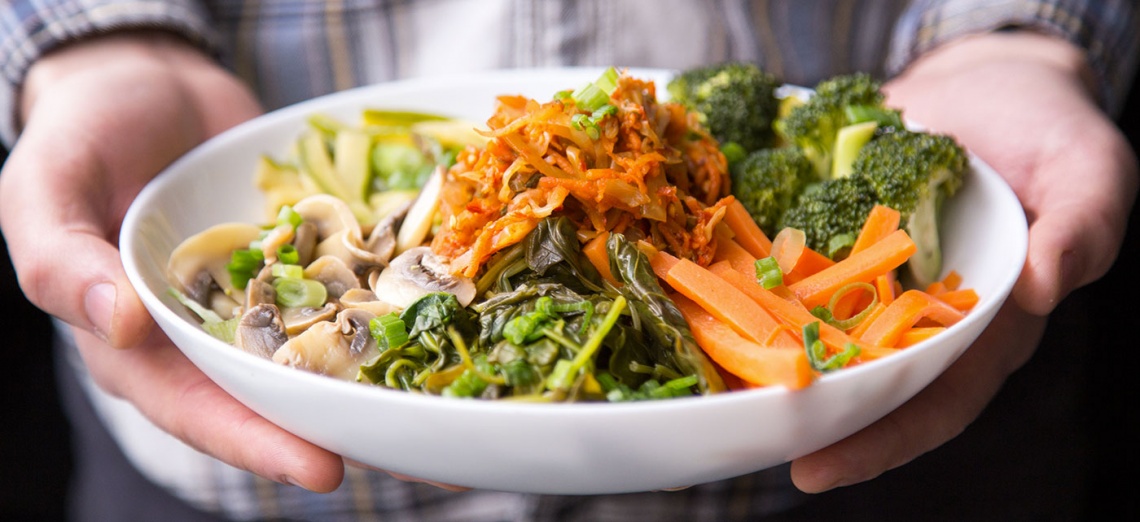The world of food is continuing to evolve. As innovations in 2018 continue to progress, we take a moment to consider some of the themes impacting the industry and the likely changes ahead for all the players involved.
1.Endless choices for empowered consumers
Advances in technology and the ever-wider circulation of information and knowledge about food have made consumers very particular about their choices, encompassing ingredients, product formats and options for delivery and service. The top-down approach traditionally adopted by brands in this sector is giving way to more user-centred strategies. With more knowledgeable customers, companies in the sector need to weigh very carefully their communication messages and to consider the factors driving the process of building trust and loyalty.
The prepared-meals segment affords a fascinating glimpse of this consumer trend. If we focus on global product launches in 2017 for example, we can see a significant increase in the number of “natural” ingredients and references on packaging, as well as the rise of products suitable for different cooking methods, those prepared according to very specific tastes, or products indicating the sustainability of their packaging materials. All of these efforts show a specific tendency, i.e. giving consumers not only plenty of diverse offerings to choose from, but also the means to judge and make better-informed purchase decisions.
Conversely, technological innovation, above all in the realm of Artificial Intelligence and machine learning, is enabling brands to better understand their customersʼ needs, monitor their response and tweak their offering accordingly.
Take, for example, IBM Watsonʼs AI food recognition models and their usefulness for gauging, say, the popularity of a restaurantʼs dishes or the recipes of a brand.
2.Free-from looks set to reach new heights
Last year saw a massive rise in the amount of new product launches falling into the free-from category and this trend is likely to continue as more consumers embrace foods that avoid certain types of ingredients or substances in the pursuit of a more natural and healthy diet.
The widespread perception that features such as gluten-free, lactose-free and the like indicate that products are inherently “healthy” raises concerns about the risks of general misinformation regarding the consequences, even potentially harmful ones, of extreme or unnecessary restrictions on what we eat. As well as the ubiquitous “gluten-” and “lactose-free” indications on packaging increasingly include, “hypoallergenic”, “no preservatives or colouring” and “vegan”. Some formerly popular claims that appear to be losing ground are “on-the-go”, “ethical” and “vegetarian”.

3.Clean eating
According to Euromonitor, a growing number of consumers in developed markets, especially within the 20-29 age group, are pursuing a healthier lifestyle where sobriety is key.
For these “clean-lifers”, alcohol is a less-attractive option and staying in at night is often preferable to hitting the clubs. Quality time and experience are what this cluster look for the most and this tendency cannot be underestimated by players in the food and foodservice sectors.
4.Spotlight on packaging
Packaging qualifies as a key communication touchpoint with consumers and it takes centre-stage at the point of purchase, where a product’s ability to stand out on the shelf depends very much on bold design and clear, simple, understandable communication (with the clean label-trend becoming anindustry standard).
Besides its informational role, packaging is a tool to articulate a companyʼs ethical stance and its values, with a growing number of consumers ready to embrace brands committed to sustainability and plastic-free / environmentally-friendly solutions.
5.Hyperlocalism
The quest for locally sourced ingredients is expected to rocket. Both manufacturers and food service operators will be significantly driven by this trend. The word “local” is likely to pair with “natural” on product labels, while internationally-renowned / award-winning restaurants, such as Ren. Redzepiʼs “Noma” in Copenhagen, are increasingly strengthening their popularity by leveraging super-curated fare with locally-sourced ingredients.
6.The future of grocery
Back in 2012, British retailer Waitrose claimed that on an average day, around 200 trolleys were used by customers in their city-centre stores in London. Today, according to the company, that number has fallen to 70. This fact gives a clue to an important shift in consumersʼ shopping habits. Smaller, more frequent, purchases point to more diversified lifestyles. (Millennial consumers spend a considerable chunk of their available income on eating out, according to Mintel); they also more considered choices about spending and food waste.
Price and quality remain key drivers for consumers, but they will be increasingly complemented by the value of in-store and online experiences, the brand value of the offering and by other key factors, such as store proximity and convenience.
Want to find out more about these insights into the Food and Foodservice industry? Send us an email References:
(1) https://www.ibm.com/blogs/bluemix/2017/05/watson-learns-see-food-introducing-watson-visual-recognition-food-model/







